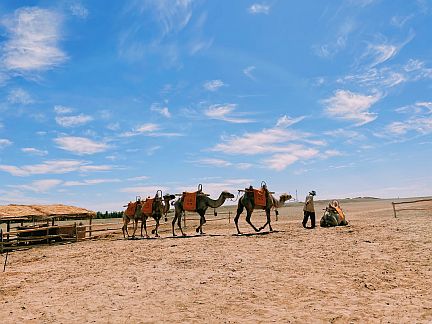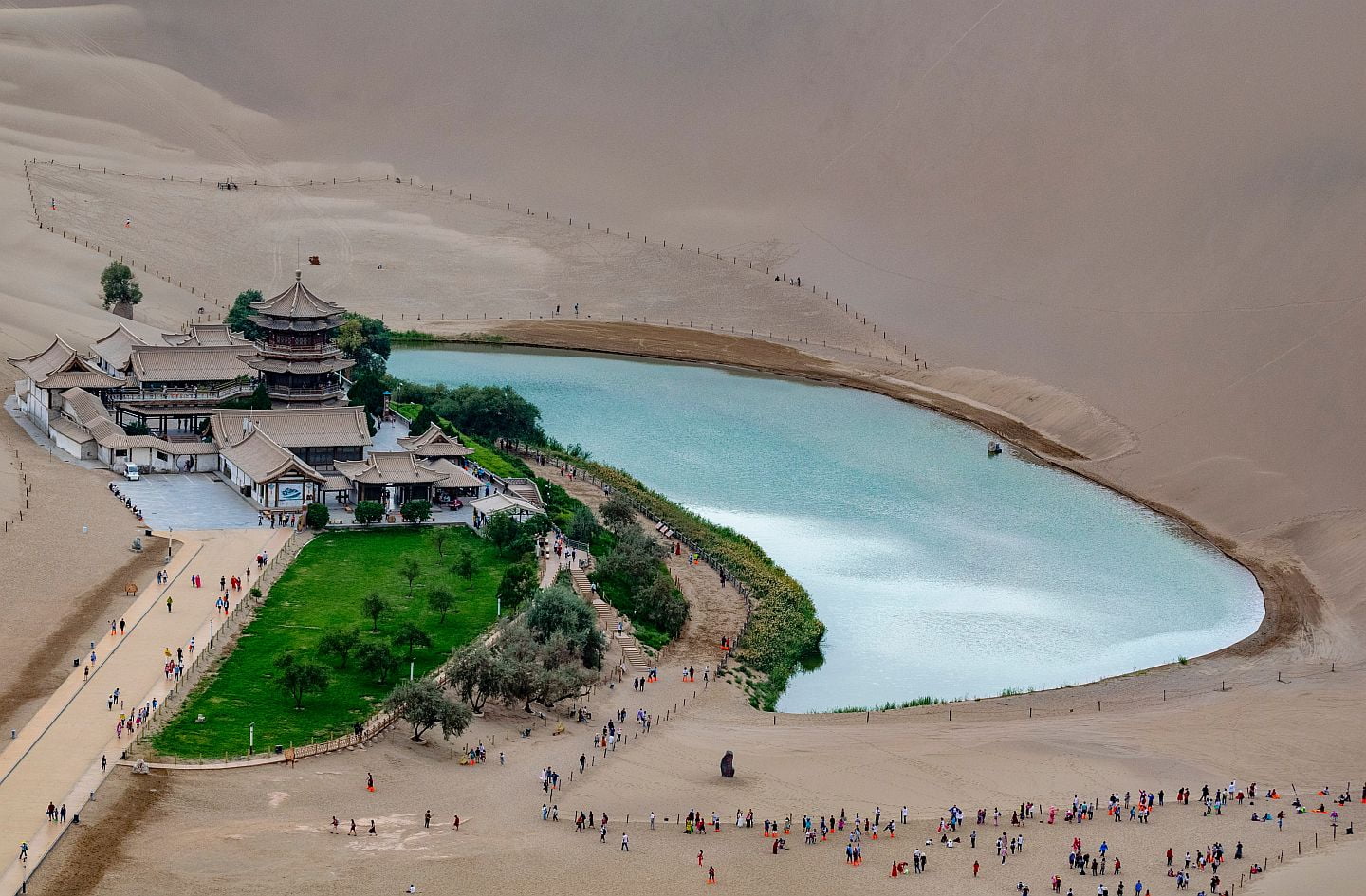
The Gansu Corridor, also known as the Hexi Corridor, was home to several important cities and settlements throughout history. These cities played significant roles in trade, cultural exchange, and the movement of people along the Silk Road. Here are some of the notable cities in the Gansu Corridor:
Dunhuang (敦煌): Dunhuang is perhaps the most famous city in the Gansu Corridor due to the Mogao Caves, also known as the Dunhuang Caves. These caves are renowned for their Buddhist art and murals, providing valuable insights into the cultural and religious interactions that took place along the Silk Road.
Jiayuguan (嘉峪關): Jiayuguan is known for the Jiayuguan Pass, one of the western termini of the Great Wall of China. It played a crucial role in protecting China’s northern border and regulating trade along the Silk Road.

Zhangye (張掖): Zhangye was an important trading hub and an oasis city along the Silk Road. It is known for its colorful Danxia Landform, unique rock formations that create a mesmerizing landscape.
Wuwei (武威): Wuwei was another significant city in the Gansu Corridor. It had strategic importance for both trade and defense, and it was known for its historical relics and cultural heritage.
Lanzhou (蘭州): Lanzhou, the capital of Gansu province, is located at the eastern end of the Gansu Corridor. While not as ancient as some other cities in the corridor, Lanzhou has grown into a major regional center due to its position along the Yellow River and as a transportation hub.
Yumen (玉門): Yumen, meaning “Jade Gate,” was an important gateway city along the Silk Road. It marked the western boundary of the Chinese empire and was a key checkpoint for travelers and trade.
Guazhou (瓜州): Guazhou, also known as Anxi, was a crucial outpost for trade and communication between China and Central Asia. It was situated at a crossroads of the Silk Road routes.
These cities were pivotal in facilitating the exchange of goods, ideas, and cultures between the East and the West along the Silk Road. They served as oasis towns, trading posts, and cultural melting pots, contributing to the rich history of the Gansu Corridor.

